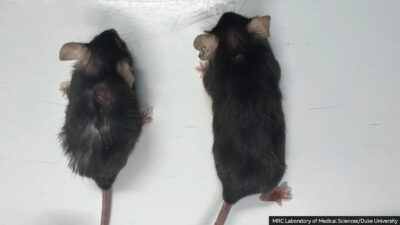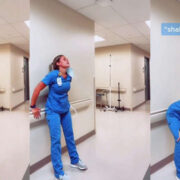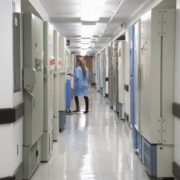Echocardiography, or echo for short, is a key diagnostic test used by cardiologists to assess the heart. It utilizes high-frequency sound waves, also known as ultrasound, to generate images of the beating heart. Unlike other imaging modalities, echo is non-invasive and does not involve radiation exposure. During an echo, a transducer is moved around the chest area to direct sound waves towards the heart. The echoes that bounce back are converted into visual representations of the heart’s structure, valves, and blood flow in real-time. This allows cardiologists to thoroughly evaluate cardiac anatomy and function. From assessing chamber size to detecting valve abnormalities and areas of poor blood flow, echo provides crucial insights. For patients experiencing concerning symptoms or those at risk for heart disease, echocardio is an invaluable tool that helps clinicians diagnose underlying problems, guide procedures, and monitor changes over time.
How Echocardiography Works
During an echocardiogram, a technician will apply a gel to the patient’s chest and move a handheld transducer around the area. This transducer emits ultrasound waves and detects the echoes as they bounce off the heart and surrounding structures. The echoes are then converted into 2D images of the heart that appear on a screen. Basic 2D echo allows visualization of the heart’s valves, chambers, wall motion, and pumping ability from different angles. Doppler echocardiography uses the Doppler effect to produce color images of blood flow through the heart and major vessels. This shows the direction and velocity of flow, which helps identify any abnormalities. Specialized stress echos involve imaging the heart both at rest and under cardiovascular stress induced by exercise or medication. This unmasks problems with blood flow that may not appear at rest. Three-dimensional echocardiography stitches together multiple 2D views to create a detailed 3D rendering of the heart. This can be useful for assessing structural issues prior to cardiac surgery or procedures. No matter the type, echocardiography is advantageous in cardiology because it is non-invasive, free of radiation exposure, and provides dynamic and detailed views of both cardiac structure and function. This sets it apart from other imaging modalities like MRI, CT, and nuclear scans.
Assessing Heart Structure and Function
One of echocardiography’s most valuable abilities is allowing cardiologists to comprehensively assess both the structure and function of the heart. Using 2D echo, they can visualize the shape and size of the heart chambers, such as detecting an enlarged left ventricle or atrial abnormality. The thickness and motion of the cardiac walls can pinpoint areas of dysfunction or previous infarction. Echo provides views of the heart valves, aiding in the identification of calcification, vegetation, or abnormal openings. The origins and paths of major vessels connected to the heart are also imaged. Being able to detect structural changes provides key insights into possible underlying cardiac disease processes.
Beyond anatomy, echo dynamically shows how effectively the heart is pumping blood to the body. Metrics like ejection fraction quantify the percentage of blood pumped from the ventricles with each contraction. Poor ejection fractions are indicative of systolic heart failure. Echo can reveal weaker heart muscle contractions caused by cardiomyopathy or ischemia. The heart’s filling patterns are also evaluated to identify diastolic dysfunction. Furthermore, echocardiography excels at assessing the performance of the cardiac valves. Abnormalities like valve stenosis, prolapse, or regurgitation are reliably identified. The direction of blood flow can even be visualized. Doppler echo and color flow mapping depict the speed and direction of blood through the heart’s chambers, valves, and great vessels. This level of functional detail is unmatched by other modalities. Echocardiography’s structural and hemodynamic insights aid diagnosis and enhance understanding of heart failure etiology.
Using Echo to Diagnose and Monitor Conditions
Echocardiography is invaluable for unraveling the root causes of concerning heart-related symptoms. If a patient complains of chest tightness, shortness of breath, palpitations, or lightheadedness, a cardiologist can use an echo to visualize what’s happening inside the heart. This allows them to pinpoint structural abnormalities or blood flow changes that might explain the symptoms. Echo is also used to monitor known cardiac conditions like coronary artery disease, cardiomyopathy, and congenital defects. It provides functional insights to track subtle changes over time that signal worsening disease. Prior to procedures like valve replacements and repairs, echo gives cardiologists detailed anatomical imaging to plan the operation. Afterwards, it evaluates the results. Additionally, echo plays a role in screening high-risk groups without symptoms, like diabetics or those with a family history of early heart disease. The cardio dr looks for early signs of dysfunction that warrant preventive treatment. For both diagnosis and monitoring, echocardiography provides rapid, non-invasive, and thorough cardiac imaging.
In summary, echocardiography is an invaluable and versatile diagnostic technique. It allows cardiologists to thoroughly yet non-invasively evaluate both cardiac structure and function, providing a wealth of information to accurately assess heart health. Echocardiography is essential for diagnosis, monitoring changes, and guiding therapy in all types of heart disease. With its detailed structural and hemodynamic insights, echo helps provide the best possible cardio care for patients by specialists like the ones who are located at cardio care Bethesda.

















